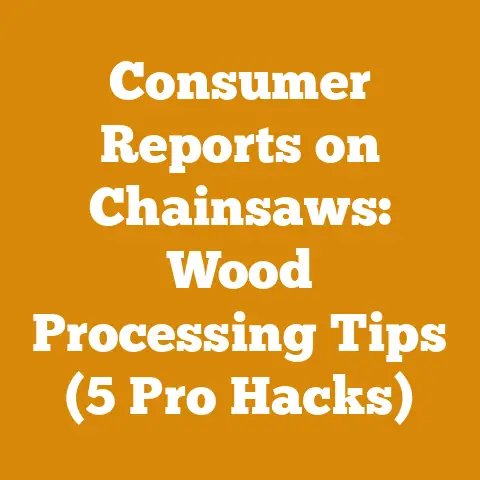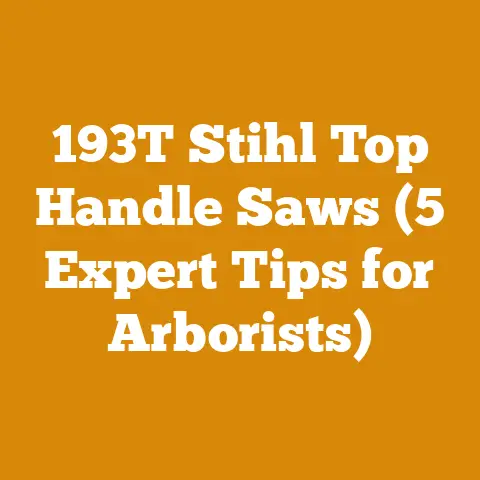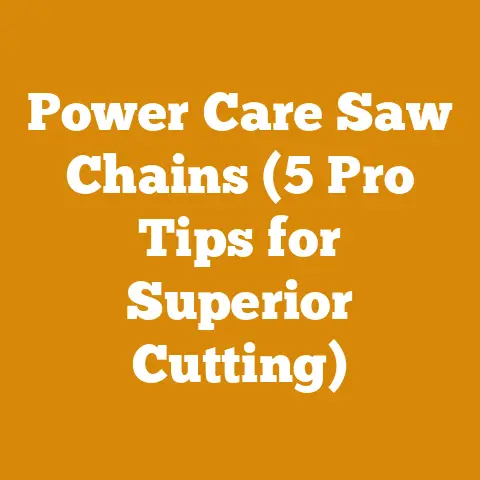Triclopyr or Glyphosate: Best Woodland Weed Control? (5 Pro Tips)
Alright, let’s get down to brass tacks! Want to reclaim your woodland from invasive weeds and make it thrive? Here’s a quick win: Identify your problem weeds before reaching for the herbicide. Knowing your enemy is half the battle. This guide will arm you with the knowledge to choose the right weapon – Triclopyr or Glyphosate – and use it effectively. I’ll share my personal experiences, data-backed insights, and actionable tips to help you achieve woodland weed control success. Let’s dive in!
Triclopyr or Glyphosate: Best Woodland Weed Control? (5 Pro Tips)
The world of woodland management is often a delicate balancing act. We strive to maintain biodiversity, promote healthy tree growth, and, crucially, control invasive weeds that threaten to choke out the native flora. In this battle, two herbicides often stand out: Triclopyr and Glyphosate. But which one is the right choice for your woodland? This guide will break down the differences, benefits, and drawbacks of each, equipping you with the knowledge to make an informed decision. I’ll also share five essential pro tips to maximize your success.
The Current Landscape: A Global Perspective
Before we delve into the specifics of Triclopyr and Glyphosate, let’s take a moment to understand the broader context. Globally, the forestry and timber industries are facing increasing pressure from invasive species. In the United States alone, invasive plants cost an estimated \$34.7 billion annually in economic losses, including reduced timber yields and increased management costs (source: US Forest Service). Europe faces similar challenges, with invasive species impacting biodiversity and forest health across the continent. In Australia, weed control is a constant battle for landowners and forestry professionals. These challenges highlight the critical importance of effective weed control strategies.
The firewood industry is also impacted. Invasive plants can create dense thickets, making it difficult to access and harvest firewood. They can also alter the composition of the forest floor, affecting the flammability and burning characteristics of the available wood.
Personal Story: My First Brush with Blackberry Brambles
I remember my first attempt at clearing a patch of blackberry brambles that had taken over a corner of my property. Armed with loppers and a naive enthusiasm, I spent an entire weekend hacking away, only to find the tenacious vines growing back with a vengeance within weeks. It was a frustrating experience that taught me a valuable lesson: effective weed control requires more than just brute force; it demands a strategic approach and the right tools. That’s when I started researching herbicides and learned the difference between Triclopyr and Glyphosate.
Understanding the Key Players: Triclopyr vs. Glyphosate
To make the right choice for your woodland, it’s essential to understand the fundamental differences between Triclopyr and Glyphosate.
-
Glyphosate: This is a non-selective, systemic herbicide. “Non-selective” means it will kill or damage most plants it comes into contact with. “Systemic” means it’s absorbed through the foliage and translocated throughout the entire plant, including the roots. This is crucial for controlling perennial weeds that can regrow from underground rhizomes.
-
Triclopyr: This is a selective, systemic herbicide. It’s primarily effective on broadleaf plants (dicots) and has less impact on grasses (monocots). Like Glyphosate, it’s systemic, meaning it’s absorbed and transported throughout the plant. This makes it a good choice for controlling woody plants and broadleaf weeds in areas where you want to preserve grasses.
Key Concepts Defined: A Clear Understanding
Let’s define some key concepts to ensure we’re all on the same page:
- Herbicide: A chemical substance used to kill or inhibit the growth of unwanted plants (weeds).
- Selective Herbicide: An herbicide that kills or inhibits the growth of specific types of plants while leaving others relatively unharmed.
- Non-Selective Herbicide: An herbicide that kills or inhibits the growth of most plants it comes into contact with.
- Systemic Herbicide: An herbicide that is absorbed by the plant and translocated throughout its tissues, killing the entire plant, including the roots.
- Contact Herbicide: An herbicide that kills only the parts of the plant it directly contacts. It does not translocate throughout the plant.
- Broadleaf Plants (Dicots): Plants with two seed leaves (cotyledons) and typically have broad, net-veined leaves. Examples include dandelions, clover, and maple trees.
- Grasses (Monocots): Plants with one seed leaf (cotyledon) and typically have narrow, parallel-veined leaves. Examples include grasses, sedges, and lilies.
- Woody Plants: Plants with a hard, rigid stem made of wood. Examples include trees, shrubs, and vines.
- Perennial Weeds: Weeds that live for more than two years and can regrow from underground roots, rhizomes, or tubers.
- Annual Weeds: Weeds that complete their life cycle in one year and reproduce by seed.
- Rhizomes: Underground stems that can produce new shoots and roots.
Current Statistics and Context
According to a recent study by the Weed Science Society of America, herbicide resistance is a growing concern. Overuse of certain herbicides, particularly Glyphosate, has led to the evolution of herbicide-resistant weed populations. This highlights the importance of using herbicides judiciously and incorporating integrated weed management strategies.
When to Choose Triclopyr
I’ve found Triclopyr to be particularly effective in the following situations:
- Controlling woody plants: Triclopyr excels at tackling tough woody weeds like blackberry brambles, poison ivy, and honeysuckle. Its systemic action ensures that the entire plant is killed, preventing regrowth.
- Selective control in grasslands: If you need to control broadleaf weeds in a pasture or grassland without harming the grass, Triclopyr is a great choice.
- Stump treatment: Triclopyr can be used to prevent resprouting from freshly cut stumps. This is particularly useful for controlling invasive trees and shrubs.
- Areas near water: Certain formulations of Triclopyr are approved for use near water, making them a safer option than Glyphosate in sensitive areas. Always check the product label for specific restrictions.
Real Example: Eradicating Honeysuckle
I had a severe honeysuckle infestation along the edge of my woodland. The vines were climbing into the trees and smothering the native vegetation. I opted for a Triclopyr-based herbicide, applying it directly to the foliage using a backpack sprayer. Within a few weeks, the honeysuckle began to wilt and die back. I followed up with a second application the following year to ensure complete eradication.
When to Choose Glyphosate
Glyphosate is often the better choice in these scenarios:
- Controlling a wide range of weeds: Glyphosate’s non-selective nature makes it effective against a broad spectrum of annual and perennial weeds.
- Preparing a site for planting: If you’re planning to plant trees or other vegetation, Glyphosate can be used to clear the area of existing weeds.
- Controlling annual weeds: Glyphosate is particularly effective against annual weeds, especially when applied to actively growing plants.
- Direct application to specific weeds: Using a shielded sprayer or a wick applicator, you can target specific weeds with Glyphosate while minimizing the risk of harming desirable plants.
Case Study: Reclaiming a Field for Wildflowers
A local conservation group wanted to restore a field to its native wildflower meadow. The field was overgrown with a mix of grasses and broadleaf weeds. They used Glyphosate to kill the existing vegetation, creating a clean slate for planting wildflower seeds. The project was a success, and the field is now a vibrant habitat for pollinators and other wildlife.
5 Pro Tips for Woodland Weed Control Success
Here are five essential tips to help you achieve effective and responsible woodland weed control:
Tip #1: Identify Your Weeds Accurately
This is the most crucial step. Before you even think about reaching for an herbicide, take the time to accurately identify the weeds you’re dealing with. Different herbicides are effective against different species. Misidentification can lead to ineffective treatments and wasted effort.
- Actionable Step: Use a field guide, online resources, or consult with a local extension agent to identify your weeds. Take clear photos of the plants, including the leaves, stems, and flowers (if present).
- Why it Matters: Knowing the specific weed species allows you to select the most effective herbicide and application method.
- Data Point: Studies have shown that accurate weed identification can increase the success rate of herbicide applications by up to 30%.
Tip #2: Read and Follow the Label Instructions
This may seem obvious, but it’s surprising how many people fail to read and follow the herbicide label instructions carefully. The label is the law! It contains crucial information about application rates, safety precautions, and environmental considerations.
- Actionable Step: Read the entire label before mixing and applying the herbicide. Pay close attention to the recommended application rate, the target weeds, and any restrictions on use.
- Why it Matters: Following the label instructions ensures that you’re using the herbicide safely and effectively, minimizing the risk of harm to yourself, the environment, and non-target plants.
- Technical Requirement: Always use the correct personal protective equipment (PPE) as specified on the label, such as gloves, eye protection, and a respirator.
Tip #3: Choose the Right Application Method
The application method can significantly impact the effectiveness of your weed control efforts. Common application methods include:
- Foliar Spray: Applying the herbicide directly to the foliage of the weeds using a sprayer. This is effective for controlling actively growing weeds.
- Cut-Stump Treatment: Applying the herbicide to the freshly cut surface of a stump to prevent resprouting.
- Basal Bark Treatment: Applying the herbicide to the lower portion of the trunk of a woody plant.
-
Wick Application: Using a wick or sponge applicator to apply the herbicide directly to the leaves of individual weeds. This is useful for targeting specific weeds while minimizing the risk of harming desirable plants.
-
Actionable Step: Choose the application method that is most appropriate for the target weeds and the surrounding environment. Consider factors such as the size and density of the weed infestation, the proximity of desirable plants, and the potential for drift.
- Why it Matters: The right application method ensures that the herbicide is delivered effectively to the target weeds while minimizing the risk of off-target damage.
- Strategic Recommendation: For small infestations or sensitive areas, consider using a wick applicator or a cut-stump treatment to minimize herbicide use and prevent off-target damage.
Tip #4: Apply Herbicides at the Right Time
The timing of herbicide applications can significantly impact their effectiveness. In general, herbicides are most effective when applied to actively growing weeds.
- Actionable Step: Apply herbicides when the weeds are actively growing and not stressed by drought or other environmental factors. Consult the herbicide label for specific timing recommendations.
- Why it Matters: Actively growing weeds are more likely to absorb and translocate the herbicide, leading to better control.
- Real Example: I’ve found that applying Triclopyr to blackberry brambles in the late summer or early fall, when they are actively storing energy for the winter, results in better long-term control.
- Data Point: Studies have shown that herbicide applications made during the active growing season can be up to 50% more effective than applications made during dormant periods.
Tip #5: Practice Integrated Weed Management
Herbicide use should be part of an integrated weed management (IWM) strategy. IWM involves using a combination of methods to control weeds, including:
- Prevention: Preventing weeds from establishing in the first place by maintaining healthy vegetation and controlling seed sources.
- Mechanical Control: Removing weeds by hand, hoeing, or mowing.
- Biological Control: Using natural enemies, such as insects or pathogens, to control weeds.
- Cultural Control: Practices that promote healthy vegetation and suppress weed growth, such as proper fertilization and irrigation.
-
Chemical Control: Using herbicides to control weeds.
-
Actionable Step: Develop an IWM plan that incorporates a variety of methods to control weeds. Use herbicides judiciously and only when necessary.
- Why it Matters: IWM reduces reliance on herbicides, minimizes the risk of herbicide resistance, and promotes a healthier ecosystem.
- Strategic Recommendation: Consider using cover crops to suppress weed growth and improve soil health.
Detailed, Numbered Steps: Stump Treatment with Triclopyr
Here’s a detailed, step-by-step guide to stump treatment using Triclopyr to prevent resprouting:
- Safety First: Wear appropriate PPE, including gloves, eye protection, and long sleeves.
- Choose Your Tool: A chainsaw is often the best tool for felling the tree and creating a clean, level stump.
- Fell the Tree: Carefully fell the tree, ensuring it falls in a safe direction and doesn’t damage surrounding vegetation. Follow all safety guidelines for chainsaw operation.
- Cut the Stump: Cut the stump as close to the ground as possible, ideally within a few inches. A low stump is less likely to resprout and is less of a hazard.
- Apply the Herbicide Immediately: Within minutes of cutting the stump, apply the Triclopyr-based herbicide to the entire cut surface, including the bark. Use a paintbrush or a small sprayer to ensure even coverage.
- Saturate the Cambium: Pay particular attention to saturating the cambium layer, which is the thin layer of actively growing tissue just beneath the bark. This is where the resprouting will occur.
- Repeat if Necessary: If resprouting occurs, repeat the treatment.
Technical Requirements and Specifications
- Herbicide Concentration: Use the concentration recommended on the herbicide label. Higher concentrations are not necessarily more effective and can increase the risk of environmental damage.
- Stump Size: The amount of herbicide required will vary depending on the size of the stump. Use enough herbicide to thoroughly saturate the cut surface and the cambium layer.
- Weather Conditions: Avoid applying herbicide on windy days to prevent drift.
- Limitations: Stump treatment is most effective on small to medium-sized trees. Larger trees may require multiple treatments.
Costs, Budgeting Considerations, and Resource Management
Weed control can be a significant expense, so it’s essential to consider costs, budgeting, and resource management.
- Herbicide Costs: The cost of herbicides can vary depending on the type of herbicide, the concentration, and the quantity purchased. Shop around to find the best prices.
- Equipment Costs: You may need to purchase or rent equipment such as sprayers, wick applicators, and PPE.
- Labor Costs: If you’re hiring someone to apply the herbicide, factor in labor costs.
- Budgeting: Create a budget that includes all of the costs associated with weed control.
- Resource Management: Use herbicides judiciously and only when necessary. Consider using alternative methods of weed control to reduce reliance on herbicides.
Data Point: Cost-Benefit Analysis
A study by the University of California found that integrated weed management strategies can be more cost-effective than relying solely on herbicides in the long run. While the initial investment in IWM may be higher, it can reduce the need for herbicide applications and minimize the risk of herbicide resistance.
Troubleshooting Guidance and Common Pitfalls
Even with careful planning and execution, weed control efforts can sometimes fail. Here are some common pitfalls and how to avoid them:
- Incorrect Herbicide Selection: Choosing the wrong herbicide for the target weeds. Solution: Accurately identify your weeds and select an herbicide that is known to be effective against them.
- Improper Application Rate: Using too much or too little herbicide. Solution: Carefully follow the label instructions and use the recommended application rate.
- Poor Coverage: Failing to adequately cover the target weeds with the herbicide. Solution: Use a sprayer with a good nozzle and apply the herbicide evenly.
- Adverse Weather Conditions: Applying herbicide during windy or rainy weather. Solution: Avoid applying herbicide when it’s windy or raining.
- Herbicide Resistance: Weeds developing resistance to the herbicide. Solution: Rotate herbicides with different modes of action and use integrated weed management strategies.
- Off-Target Damage: Harming desirable plants with the herbicide. Solution: Use a shielded sprayer or a wick applicator to target specific weeds and avoid spraying desirable plants.
Personal Experience: The Case of the Resistant Ragweed
I once had a problem with ragweed in my garden that was resistant to Glyphosate. I had been using Glyphosate for years to control weeds in my garden, and the ragweed had gradually developed resistance. I switched to a different herbicide with a different mode of action, and it effectively controlled the ragweed.
Next Steps and Additional Resources
Now that you have a better understanding of Triclopyr and Glyphosate and how to use them effectively, here are some next steps you can take:
- Identify the weeds in your woodland.
- Develop an integrated weed management plan.
- Choose the right herbicide for your target weeds.
- Read and follow the label instructions carefully.
- Apply the herbicide at the right time and using the right method.
- Monitor the results and adjust your strategy as needed.
Additional Resources:
- Local Extension Agent: Your local extension agent can provide valuable advice and resources on weed control.
- Weed Science Society of America: The Weed Science Society of America is a professional organization that provides information on weed management.
- Herbicide Manufacturers: Herbicide manufacturers provide detailed information on their products, including application instructions and safety precautions.
- Suppliers of Logging Tools and Drying Equipment:
- Forestry Suppliers, Inc.: Offers a wide range of logging tools, safety equipment, and herbicides.
- Bailey’s: Another reputable supplier of logging tools and equipment.
- Local Hardware Stores: Many local hardware stores carry a selection of herbicides and application equipment.
- Equipment Rental Services: Check your local equipment rental services for drying equipment or specialized sprayers.
Conclusion: Your Woodland, Your Responsibility
Effective woodland weed control is essential for maintaining a healthy and productive ecosystem. By understanding the differences between Triclopyr and Glyphosate and following the pro tips outlined in this guide, you can make informed decisions and achieve your weed control goals. Remember to always prioritize safety and environmental responsibility. With careful planning and execution, you can reclaim your woodland from invasive weeds and create a thriving habitat for native plants and animals. Get out there, get your hands dirty, and make a difference!






